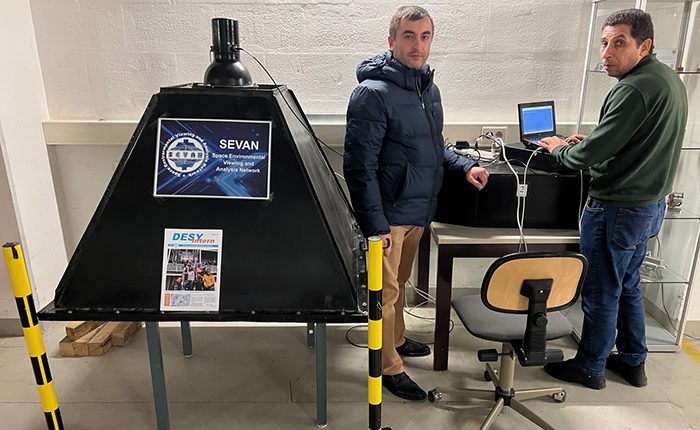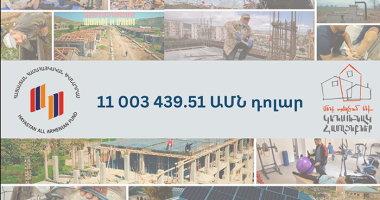ZEUTHEN,, GERMANY — During the October 21- November 5, 2022 visit to the DESY research center in Zeuthen, Germany, Armenian scientists from the Cosmic Ray Division (CRD), Yerevan Physics Institute reassembled the SEVAN (Space Environment Viewing and Analysis Network) detector. They prepared the Armenian designed instrument for installation at Zugspitze Mountain in the Bavarian Alps, the highest summit of Germany. Modification of SEVAN, the so-called SEVAN-light instrument, is supported by new electronics, which was tuned and tested during the visit. New electronics will allow not only count rates of electrons, gamma rays, muons, and neutrons to be measured but also their energy spectra. Currently SEVAN is operated in the experimental hall on the first floor of the main building in Zeuthen, waiting to measure changes in the energy spectra during Forbush Decreases (FDs, a significant depletion of the particle flux due to fierce solar bursts). Also, the high-voltages and energy thresholds of the 3 channels of the SEVAN detector currently located at DESY, Hamburg, were fine-tuned.
Many species of elementary particles are created in the terrestrial atmosphere by high-energy protons and fully-stripped nuclei accelerated by galactic and extragalactic sources and by the sun. The sun is a tremendously variable object, capable of modulating the fluxes of the Galactic cosmic rays and sending intense fluxes of Solar Cosmic Rays in the earth’s direction. Because of the sun’s proximity, the effects of the changing fluxes can have a major influence on the earth, including climate, safety, and other areas. SEVAN carefully detects these fluxes, recovers energy spectra, and issues alerts on dangerous consequences of space and terrestrial weather, as well as on radiation doses and very strong electric fields, which occur periodically during thunderstorms. Solar, Astroparticle, and Atmospheric physics are synergistically connected and need to exchange data for the explanation of particle bursts and for revealing the influence of solar flares, violent explosions in the galaxy and beyond, as well as the influence of the atmospheric electric fields on the fluxes of secondary cosmic rays registered on the earth’s surface.
The SEVAN network aims to improve fundamental research on particle acceleration in the vicinity of the sun, space weather effects, high-energy physics in the atmosphere, and lightning physics. SEVAN units measure fluxes of most species of secondary cosmic rays, thus being a powerful integrated device for the exploration of solar and atmospheric modulation effects. The SEVAN modules are operating at the Aragats Space Environmental Center (ASEC) in Armenia, Bulgaria, Croatia, the Czech Republic, Germany, and Slovakia. The synergy of all areas of high-energy physics will open new areas of research for better understanding and developing physics of the geo-space. Geophysical research is becoming more and more important in the coming decades of rapidly rising natural disasters.










